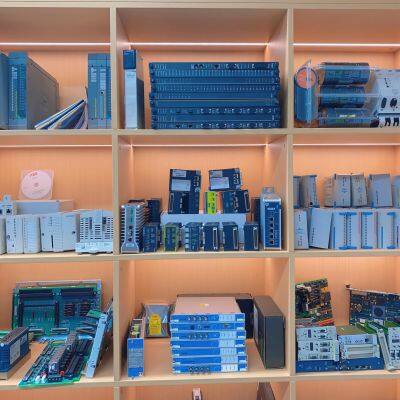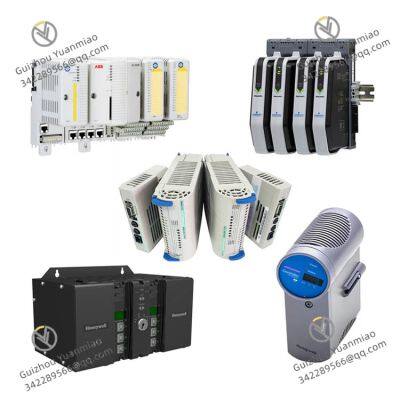HONEYWELL 51400700-100 Data Hiway Interface (DHI) Board
- guizhou
- T/T Other
You May Like
-
HONEYWELL 51304518-150 Network Communication Adaptation Module
-
HONEYWELL 51304650-100 Digital Output Module
-
Honeywell 51403776-100 System Processor Spacer Board
-
Honeywell 51404203-002 Control Firewall Module
-
Honeywell 51404223-001 Safety Explosion-Proof Module
-
Honeywell 82408217-001 Analog Input Module
Product Details
| Material | Other, Global universal model | Condition | Other, Global universal model | |
| Task | Other, Global universal model | Mathematical Model | Other, Global universal model | |
| Signal | Other, Global universal model | Customized | Non-Customized | |
| Structure | Other, Global universal model | Operating Temperature | -40℃~+70℃ | |
| Relative Humidity | 5%~95% (non-condensing) | Storage Temperature | -55℃~+85℃ | |
| Dimensions | 160mm × 80mm × 220mm |
Product Description
Honeywell FC-SCNT01 Safety Controller Module
I. Overview
II. Product Attributes and Technical Features
(I) Basic Attributes and Specifications
=
(II) Functional Features
Integrated Design of "Signal Conditioning + Isolation Protection"
Deep Compatibility with Honeywell DCS Systems
Fault Self-Diagnosis and Redundancy Expansion
III. Application Scenarios
Signal Conditioning and Isolation for Chemical Reactors
Upgrade Transition of Old TDC 3000 Systems
Centralized Signal Processing for Auxiliary Equipment in Power Plants
Company Profile

Main products: Covering globally renowned brands: Bently Nevada, Triconex, Woodward, Foxboro, Westinghouse, Reliance, Schneider Modicon, ABB, AB (Allen-Bradley), Motorola, GE Fanuc, Yaskawa, Bosch Rexroth Rexroth, ACSO, YOKOGAWA, Rexroth, NI, ICS Triplex, Kollmorgen, Mitsubishi, MOOG, Emerson, B&R B&r, SST, ALSTOM, KUKA EPRO, LAM HIMA dark Horse, HONEYWELL, prosoft, AMAT, SIEMENS, etc. The product categories include: DCS system accessories, robot system spare parts, large servo system spare parts, etc., which are widely used in power, chemical, metallurgy, intelligent manufacturing and other fields.
Contact Us

- Guizhou Yuanmiao Automation Equipment Co., Ltd.
- Contact nameyezi Chat Now
- AddressXixiu District, Anshun, Guizhou
Product Categories
New Products
-
HONEYWELL 51202329-606 I/O Link Gray Header Cable
-
HONEYWELL 51305072-300 CLCN-A CE Compliant I/O Card
-
HYBRICON PCI354-1022-38 Power Supply
-
HYDEPARK SM552A-173LE Ultrasonic Sensor
-
Bently Nevada 3500/05-01-03-00-00-00-2 3500 System rack
-
KOLLMORGEN S21260-SRS Servo Drives
-
ENTERASYS A4H124-4FX P0973JN Ethernet Switch
-
ICS TRIPLEX T8110C Processor Conformal Coated
-
ICS TRIPLEX T8402 Digital Input Module
-
ICS TRIPLEX T8431C Analog Input Module
-
ABB PCS6000 Medium-Voltage Full-Power Converter
-
ABB PCD235B101 3BHE032025R0101 Exciter Control Module
-
ABB REM620A_F NAMBBABA33E5BNN1XF Motor protection and control relays
-
ICS TRIPLEX TC-201-01-4M5 Chassis Power Cable
-
ABB DDC779BE02 3BHE006805R0002 Circuit Card
-
ICS TRIPLEX TC-215-01-4M5 Chassis Power Cable
-
ICS TRIPLEX TC-303-01-2M0 Chassis Power Cable
-
Vibro-meter SIM-275D-24 200-582-200-011 Power Supply Module
Find Similar Products By Category
- Electrical & Electronics > Electrical Control System
Product Tags:
- Please Enter your Email Address
- Please enter the content for your inquiry.
We will find the most reliable suppliers for you according to your description.
Send Now-
 yezi
Hi there! Welcome to my shop. Let me know if you have any questions.
yezi
Hi there! Welcome to my shop. Let me know if you have any questions.
Your message has exceeded the limit.

- Contact supplier for lowest price
- Customized Request
- Request Sample
- Request Free Catalogs
Your message has exceeded the limit.
-
Purchase Quantity
-
*Sourcing Details
Your inquiry content must be between 10 to 5000 characters.
-
*Email
Please enter Your valid email address.
-
Mobile



